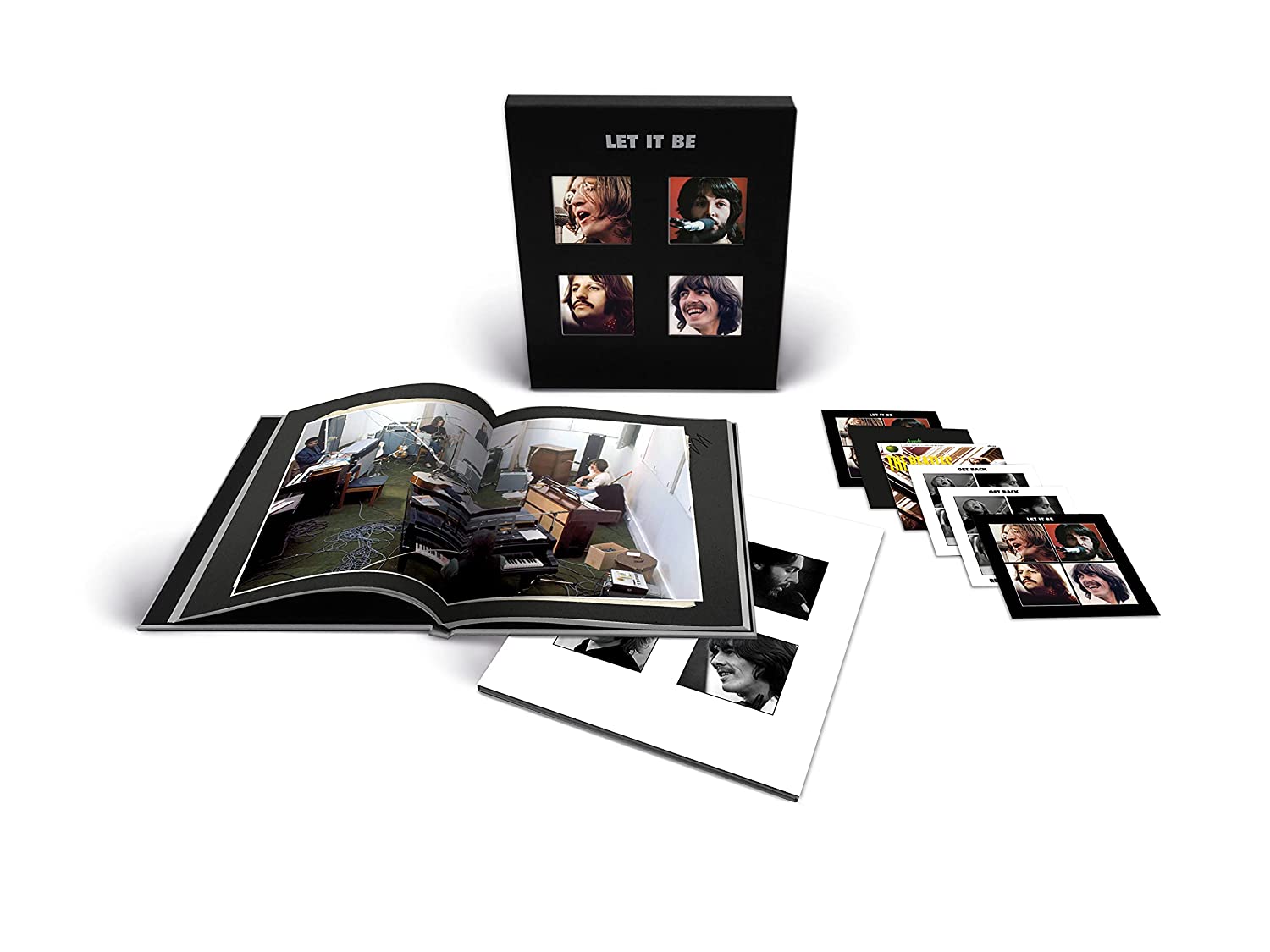
No album in The Beatles canon has ripples of revision, dissection, and debate quite like Let It Be. It’s the last album the Fabs released, but not the last album they recorded. It’s the break-up album that wasn’t. It’s also the impetus for the last live performance by the four (or five, if you count Billy Preston’s guesting; and you should count him- he helped save the entire project). Then, some of the raw, “live” tracks oddly became a canvas for Phil Spector’s gloopy overdubs; ones that angered no less than Paul McCartney, and irritated longtime Beatles producer, George Martin. Not exactly the finale either man wanted. This six-disc special edition, five decades later, adds two more versions to consider: a brand new mix of Let It Be and the 1969 Get Back LP mix by revered engineer Glyn Johns (The Rolling Stones). Counting that pair, there are currently in existence at least five versions of an album whose own title suggests, well, letting it be.So, Beatles fans, which will it be? The original 1970 release that coincided with an eponymous (now out-of-print) film of the sessions and the famed rooftop concert at Apple; the original that Spector, in post-production, loaded with over four-dozen orchestral players, including a flourishing harp that notoriously coated McCartney’s long and winding road in a glaze of syrup? Or McCartney’s response in 2003, Let It Be… Naked, that effectively exorcised Spector, and essentially kept only the contributions of the quartet and Preston? Or the 2009 remaster that reverted back to the original mix, granted, with a renewing sheen?Or will it be Johns’ 1969 mix titled, as McCartney first conceived, Get Back– as much a name as an edict for the group to return bare to its rock-and-roll roots, including the cover shot taken in the same EMI stairwell where the mop-tops posed for the Please Please Me cover six years earlier? Or this new mix- brighter, with more separation and a greater emphasis on the vocal- by none other than Giles Martin, son of George, that tightropes between Macca’s unadorned intentions and Spector’s mellifluous essence?How about all of them? Rather than choosing one, how about reveling in this opportunity in modern times to appreciate them all? Because, really, each version contains very revealing and rewarding moments. Plus, what true Beatles fan is ever satiated? Old and new. Original and updated. Let it be debated. Let it be celebrated. Possibly the most rewarding parts of this collection aren’t even the two proper albums- though the Johns’ mix (requested in ’69 by John Lennon and McCartney) is an unquestionable joy to finally behold. Talk about naked Beatles; Johns’ edit is as pink and exposed as The Beatles could be at the time. One can only imagine how releasing Get Back instead of Let It Be would’ve tilted things; punk may have arrived years sooner. The two discs of rehearsals and jams- these, too, are real treasures. Honestly, is there a fan or musician alive who wouldn’t have wanted to be a fly on the wall for any Beatles session, let alone ones that give us sketches of “I’ve Got A Feeling,” “Don’t Let Me Down,” and early previews of songs that Abbey Road would debut? These two discs offer that and more: hearing John, Paul, George, and Ringo talk through the creative process, and more importantly, work through the music; with numerous takes of the blossoming material, including a Beatles rundown of George Harrison’s gestating “All Things Must Pass.” It bears repeating: we get to hear The Beatles work. (And, order lunch.) For this reason alone, the Let It Be Super Deluxe Special Edition is as essential as it gets.Forget the fact that they were irritated with each other at times during the sessions; Preston’s presence calmed everyone and put them on their better behavior. And what band hasn’t gone through tense exchanges while making an album? Months after the Let It Be sessions, The Beatles (with George Martin producing) recorded the magnificent Abbey Road, and its penultimate song, “The End.” Yet Let It Be, issued after Abbey Road, became, symbolically and otherwise, the end. And with it, the feeling that the sessions and the resulting recordings had to self-fulfill the prophecy: viewed and heard as the breaking up of The Beatles. Regardless of albums and sessions and dates, in light of this new set, we can instead consider an end of The Beatles to be the moment when the police arrive to close down Let It Be’s rooftop concert. For anyone who’s ever picked up an instrument, determined to rock and roll, there is no more perfect way to call it a day.
